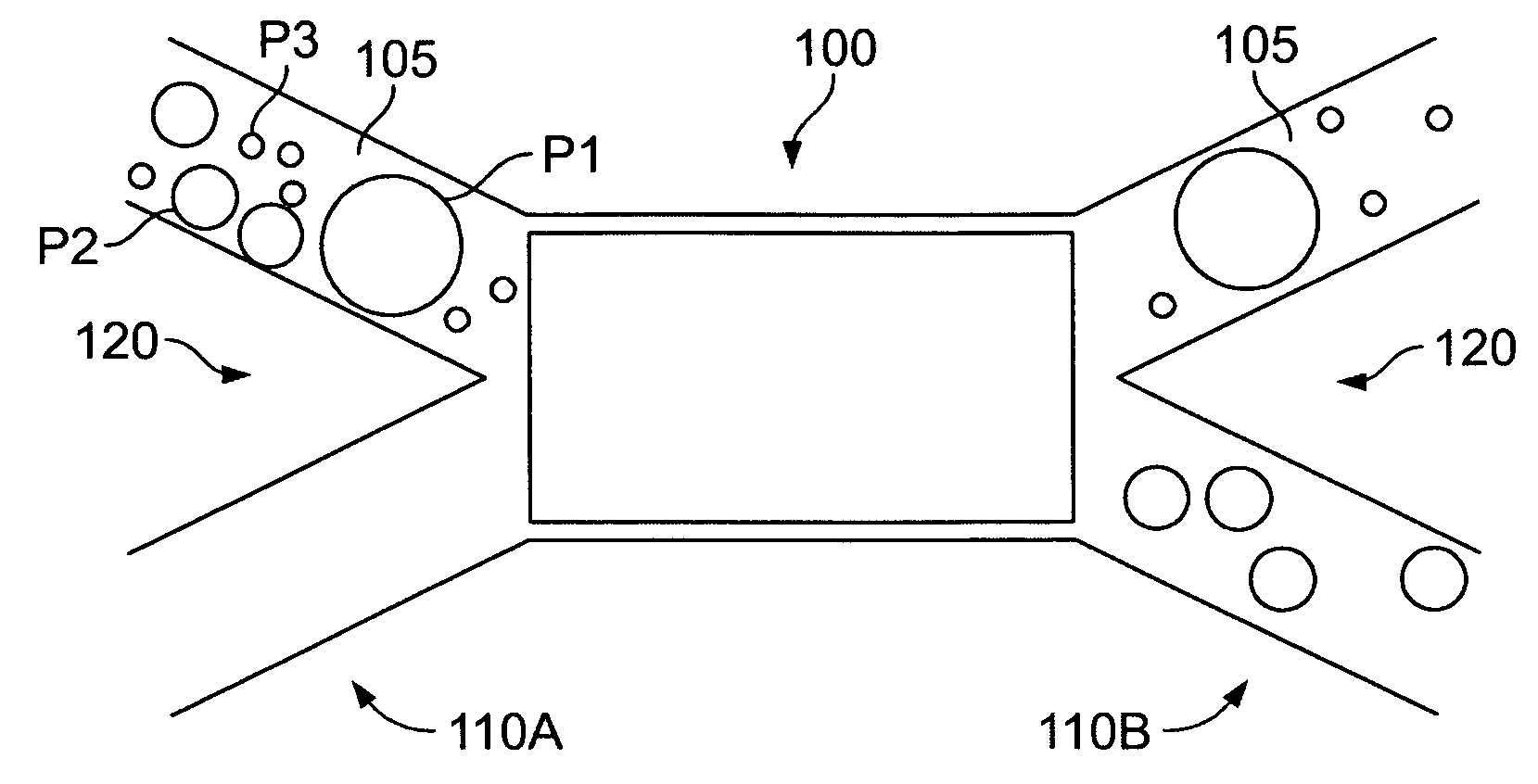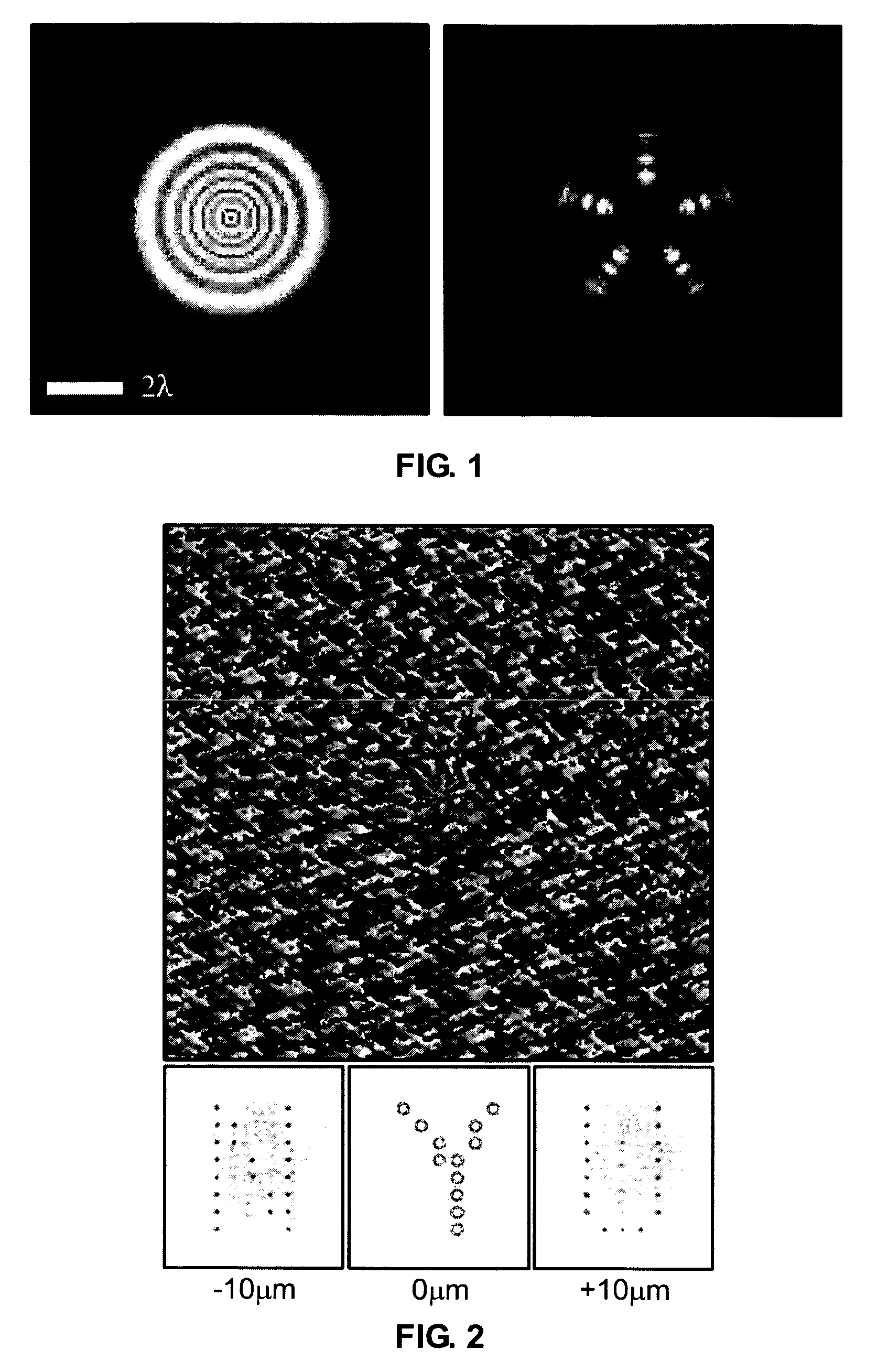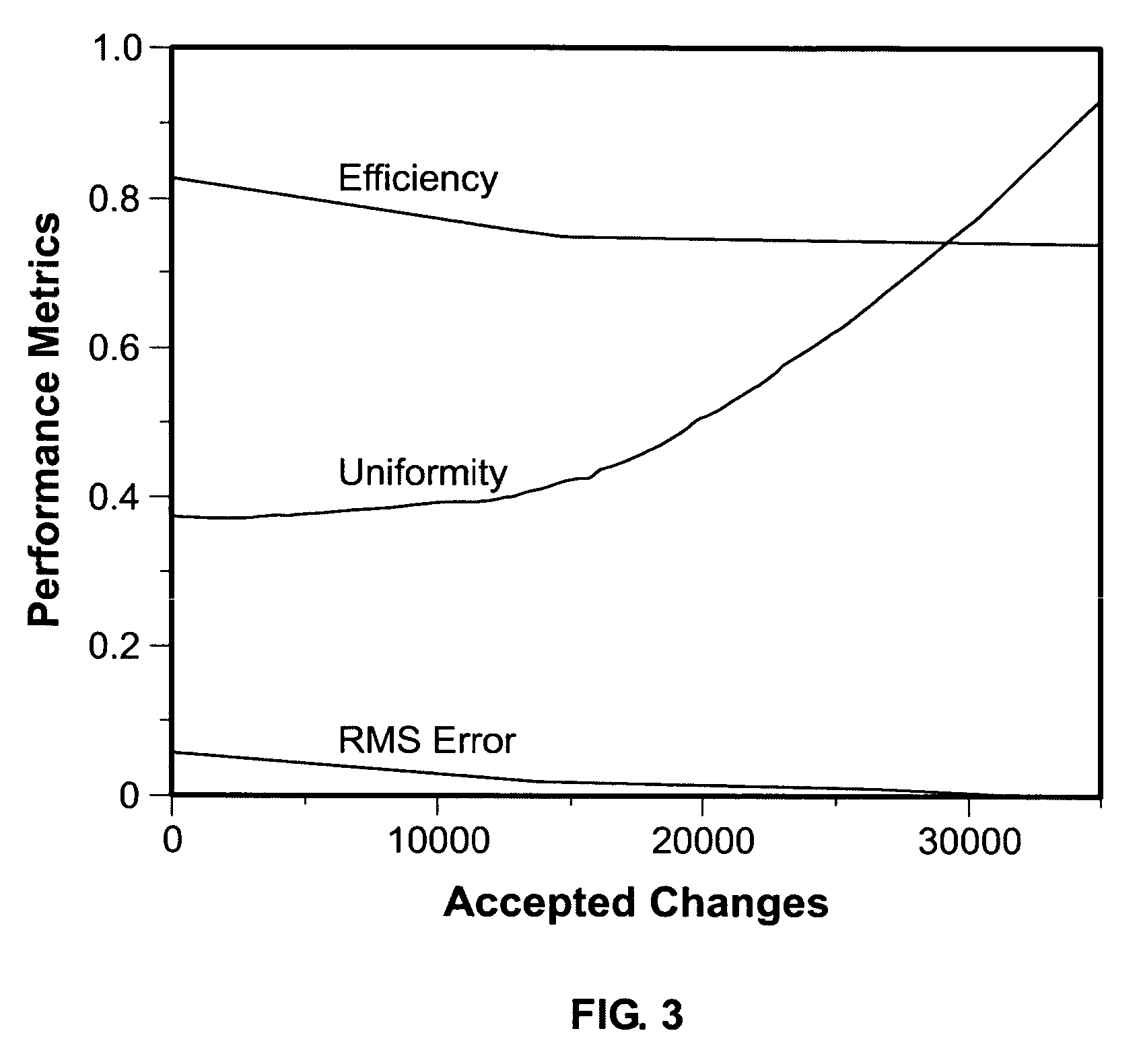Modulated optical tweezers
a module and optical technology, applied in the field of modules of optical tweezers, can solve the problems of extending these techniques to larger and more complex systems, requiring larger and more complex arrays of optical traps, interferometric techniques, and substantially more limited in the types of intensity patterns that can be created, so as to facilitate objects' escape, reduce stiffness, and facilitate the effect of objects' escap
- Summary
- Abstract
- Description
- Claims
- Application Information
AI Technical Summary
Benefits of technology
Problems solved by technology
Method used
Image
Examples
Embodiment Construction
[0034] Optical traps refer to a type of force exerted by a beam of light to trap and move small objects. In general, these forces fall into two categories: (1) radiation pressure that tends to push objects down the axis of a beam, and (2) optical gradient forces. Optical gradient forces arise because objects develop electromagnetic dipole moments when illuminated by light. Intensity gradients in the light exert forces on these dipole moments whose sign depends on the relative dielectric constants of the object and the surrounding medium. Particles with higher dielectric constants than their surroundings (high-dielectric particles) generally are drawn up by the gradients toward brighter regions while low-dielectric particles are pushed away to darker regions.
[0035] Optical gradient forces provide the basic forces necessary for the single-beam optical trap known as an optical tweezer. An optical tweezer comprises a single beam of light brought to a diffraction-limited focus by a high...
PUM
 Login to View More
Login to View More Abstract
Description
Claims
Application Information
 Login to View More
Login to View More - R&D
- Intellectual Property
- Life Sciences
- Materials
- Tech Scout
- Unparalleled Data Quality
- Higher Quality Content
- 60% Fewer Hallucinations
Browse by: Latest US Patents, China's latest patents, Technical Efficacy Thesaurus, Application Domain, Technology Topic, Popular Technical Reports.
© 2025 PatSnap. All rights reserved.Legal|Privacy policy|Modern Slavery Act Transparency Statement|Sitemap|About US| Contact US: help@patsnap.com



